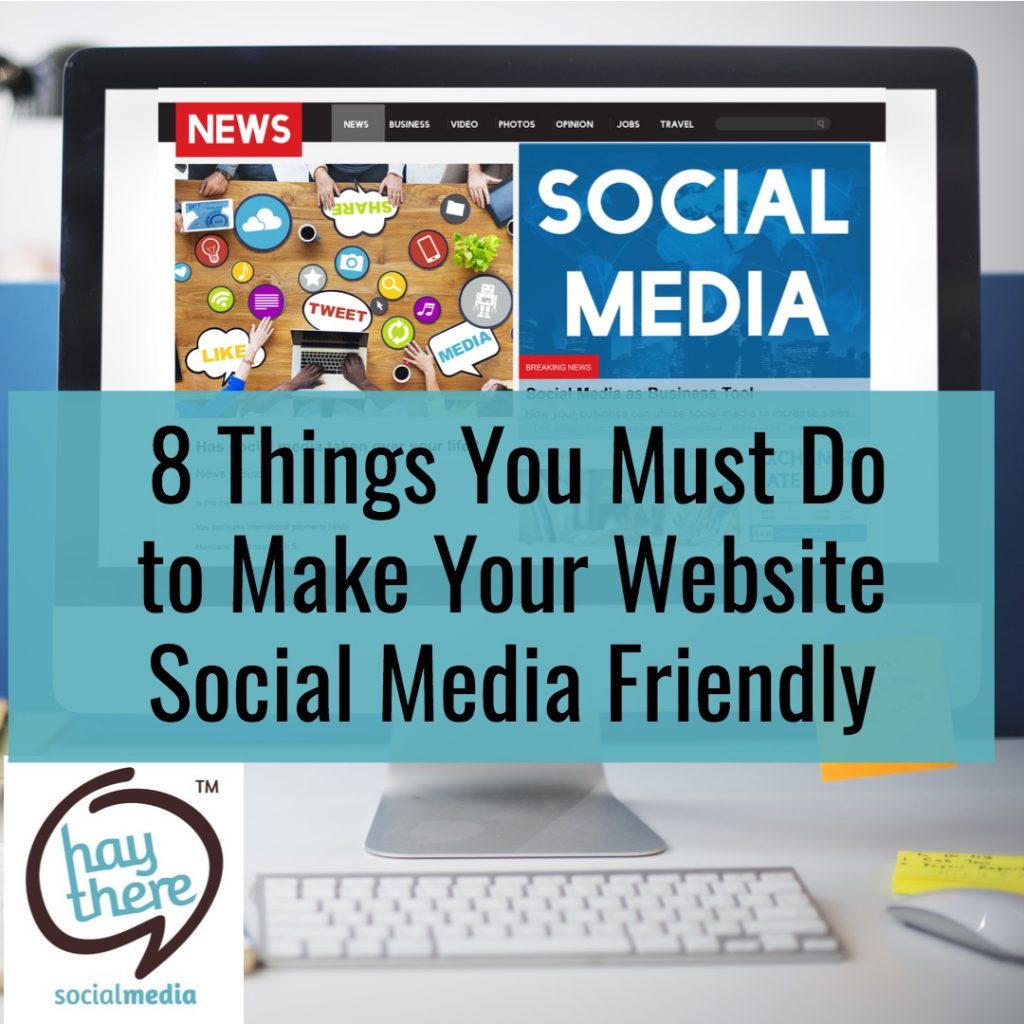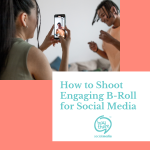
Your website – whether it’s selling a product, offering a service or sharing information – NEEDS to be social media friendly. Why? You want as much exposure as you can get, right? Well, that means you need to make it easy-peasy for anyone coming across your website to share a page on social media!
Social media is imperative to your digital content marketing plan. On average, people spend nearly an hour on Facebook each day.
Get in on that time! Imagine people sharing links to your website, and their friends commenting on, liking and sharing them as well. Think of all the potential exposure you’ll be getting (especially if you’re a dentist or medical practice)! But to make the most of those opportunities, you need to make sure your website is social media friendly.
Here are 8 Things You Must Do to Make Your Website Social Media Friendly:
1. Have an image on every page
When you share content on Facebook and other social media sites, a link preview automatically populates with an image. That picture is whatever is already on your website’s page – which could mean a logo or other random image that doesn’t necessarily correlate to the content itself, but it’s sitting somewhere on that page. Or, there could be no image, logo or otherwise, that populates in the preview.
Associate an appropriate image for EACH and every page on your website – even your “contact us” page – because you’ll never know when someone wants to share it! And links shared without images are boring.
Images must be:
- Relevant to the page itself
- Appropriate for all audiences to see (no NSFW main images)
- The correct size so as not to be cropped out, or too small
- Non-stock whenever possible
2. Use an attention-getting headline or title
That link preview that pops up on social media also generates the page title or headline. So, naturally, you’ll want to be thinking ahead when creating those titles on your website to ensure they are interesting and eye-catching.
But DO NOT rely on click-bait headlines! Sure, we all probably use them at some point or another, but unless you’re a gossip site. chances are you won’t benefit.
Headlines should:
- Tell the point of the page/article/blog post in clear terms
- Make people to want to find out more
- Be appropriate for all audiences
3. Have enticing and appropriate preview content
You know that preview content that automatically generates when someone shares a link on social media? You can control it. This little blurb of content is important because it lets the reader know what they could read more about if they just click that link. And you want them to click the link, right?
Preview content:
- Should be slightly more in-depth than the headline
- Can be the first line of content from the page itself
- Shouldn’t be copyright or other content unrelated to the specific page
4. Be mobile-friendly
When’s the last time you viewed your business website on your phone? Go through every page and see how each one looks on a mobile platform. If it doesn’t pass your test, make sure you have the mobile-friendly optimizer option enabled on your website.
To be mobile-friendly:
- Ensure the mobile-friendly optimizer option is enabled on your website
- Be conscious of content you have in sidebars (which can be overlooked)
- Don’t make users click to the next page for each image, example, or product you want to showcase (list as many as possible on one page, or else the user may give up)
5. Have links to your social media accounts
These days, people want to check your business out on social media. They like to see what other people say about you, your product or service, and your customer service.
So, make it easy for them to find you – and talk to you. Put links on your main website page to connect people directly to your social media accounts (because you have them set up and maintained, right?).
6. Use social media share icons
The easier it is for someone to share your content, the more likely they will be to do so. Don’t make an interested party jump through hoops to pass along your content…because you may be losing out on a prospective buyer or client if they have to put in a lot of effort.
Have the social media share icons inserted on every page, article or blog content (yes, you should have a blog!) on your site. There are several options for you to install that will allow users to automatically post your link on their own Facebook, Twitter or other social media platform.
7. Enable comments
People want to be able to contact you immediately – and without having to take extra steps to do so. They don’t always want to look around for your phone number or email address, and they may not want to post on your social media accounts (or Yelp, either) for whatever reason.
Allow them the opportunity to leave a comment directly on each relevant page on your website – especially ones that could invite discussion. They may applaud your product, complain about it, or ask you a question.
Most importantly, make sure you respond to each and every comment – EVEN the not-so-great ones. (Here’s why). Be sure to have something installed on your website to monitor and delete the automated bot comments that can inevitably show up (or keep a strict watchful eye yourself).
8.Add social media feeds to your website
If you’re posting on social media routinely (and of course you are!), you can add a widget to your website that will display an updated account of your social media feeds. This way, people will see that you are a real, up-to-date business who is active on social media.
Being active on social media helps make your brand more relatable, personal and inviting to new clients and customers.
Let Hay There Social Media help!
At Hay There Social Media, our team is fully immersed in the social media world, and we know how to manage your digital content marketing so you get the most exposure (and bring in more business). Contact us today to find out how we can help you make your website social media friendly, and maintain your social media presence for you.








